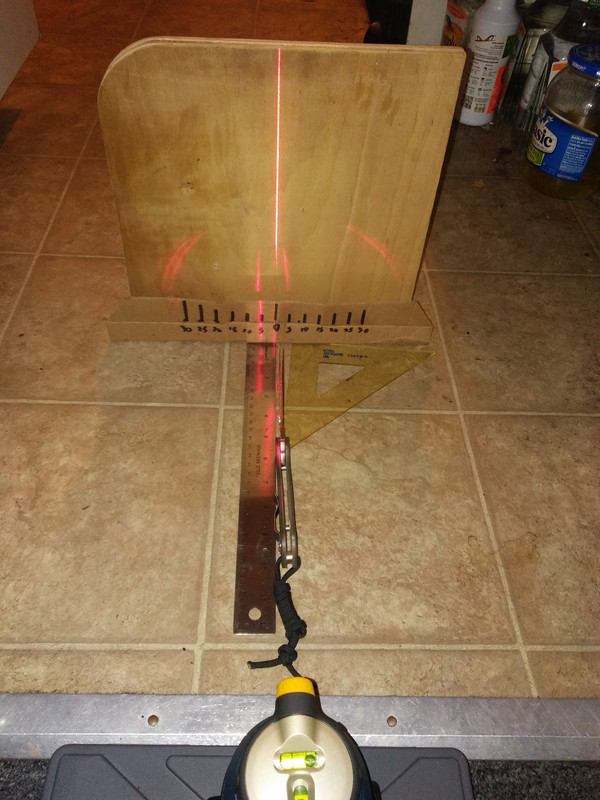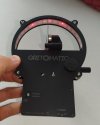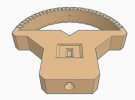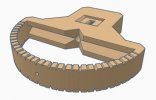- Joined
- Mar 24, 2021
- Messages
- 77
I've seen the CATRA version, but ran into this on YouTube:
I gave it a try with a laser bore sighting tool, and found a printable protractor online. I am not an engineer or scientist... and I'm pretty bad at math so I could be way off base. I tested my setup using objects with a known angle (those little plastic sharpening wedge guides) as well verifying with a digital angle cube.
The (2) pics show a Sebenza that I sharpened to about 25 degrees per side on a fixed angle system, and a Native 5 that I hand sharpened to about 15 degrees per side. You can see the laser bore sight at 9 0'clock in the frame. On the Native 5, I found a flat spot on the blade that refracted the laser to the handwritten zero on the protractor. The picture show the edge interrupting the beam, and the laser is refracted as a smear centered over the hand written 15 degree mark. The Sebenza refracts a dot near the 25 degree mark. It's a dot rather than smear because the edge is not convex and was sharpened on a fixed angle system.
Seems to work.. but does it really??


I gave it a try with a laser bore sighting tool, and found a printable protractor online. I am not an engineer or scientist... and I'm pretty bad at math so I could be way off base. I tested my setup using objects with a known angle (those little plastic sharpening wedge guides) as well verifying with a digital angle cube.
The (2) pics show a Sebenza that I sharpened to about 25 degrees per side on a fixed angle system, and a Native 5 that I hand sharpened to about 15 degrees per side. You can see the laser bore sight at 9 0'clock in the frame. On the Native 5, I found a flat spot on the blade that refracted the laser to the handwritten zero on the protractor. The picture show the edge interrupting the beam, and the laser is refracted as a smear centered over the hand written 15 degree mark. The Sebenza refracts a dot near the 25 degree mark. It's a dot rather than smear because the edge is not convex and was sharpened on a fixed angle system.
Seems to work.. but does it really??














